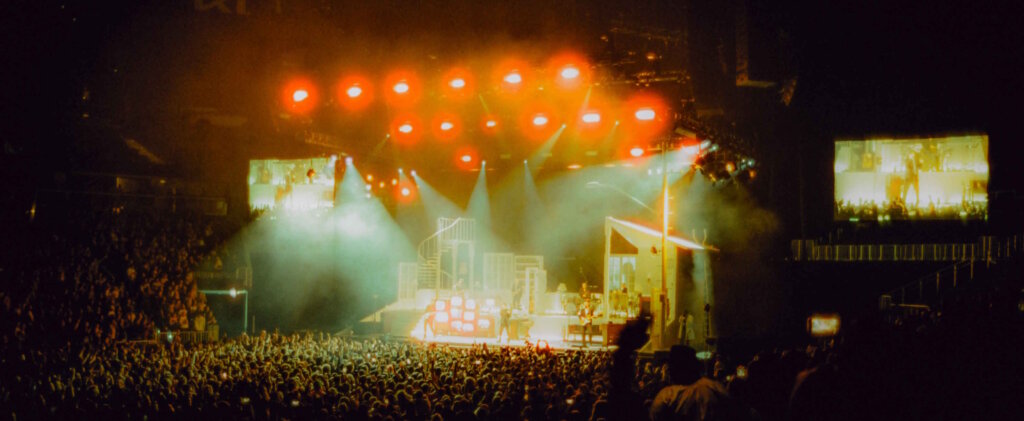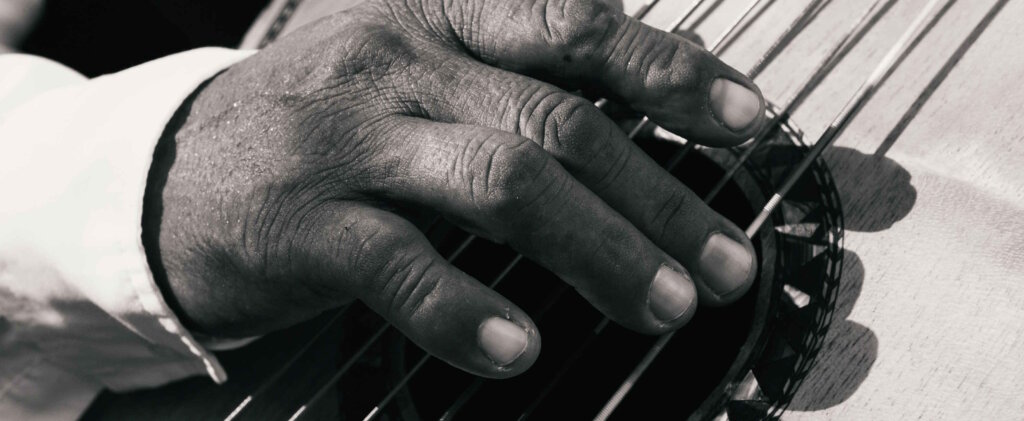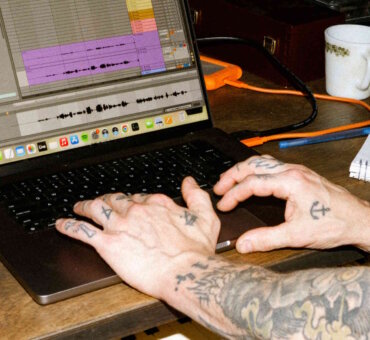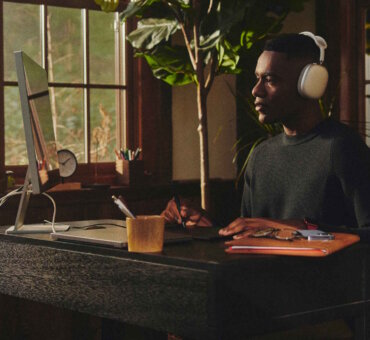Music licensing in films is essential for two reasons. First of all it protects you, the filmmaker, from any potential legal harm. Secondly, it’s correctly rewarding and acknowledging music artists for their hard work. On the other hand, if you don’t understand the business of music rights clearance, you may well open yourself up to legal damages, as well as a loss of reputation and connections.
Of course, in order to acquire popular songs and well-known music, you’ll need a good budget, as well as some basic knowledge of how to get music rights and the landscape of music licensing fees. Alternatively, when using a service like Musicbed, you can leave this process to professionals who can assist with the licensing process, even if the song’s a well-known hit.
How Music Licensing Works
So, how to license music? Let’s take a look at the basics. When a musician creates an original work and registers the copyright for that work, that song becomes their intellectual property. By law, that property cannot be used by anyone other than the copyright owner without written consent from the owner.
As a way to earn income from their work, artists and copyright owners can issue licenses that allow others to legally use their work in their projects. These licenses will include the usage and term rights, which determines how the song will be used. There are six major forms of music licenses:
- Synchronization License (Sync License)
- Mechanical License
- Master License
- Public Performance License
- Print Rights License
- Theatrical License
When it comes to filmmaking, these are the most common types of license you’ll need to obtain:
- Synchronization License (Sync License). A synchronization license, obtained from the copyright holder of the music, allows you to synchronize that music with visual images in your film – crucial for incorporating the music into your project.
- Master Use License. The master use license is acquired from the copyright holder of the sound recording and permits the use of a specific song recording in your film. It’s essential, even if you have a synchronization license for the musical composition.
- Public Performance License. To publicly screen, broadcast, or stream your film with music, you need a public performance license from organizations like ASCAP, BMI or SESAC, granting you legal authorization to use the music in these contexts.
- Mechanical License. To reproduce music in physical or digital formats like BluRay or digital downloads, you must secure a mechanical license granting you the right to distribute the musical composition in these formats. This is usually obtained from music publishers or mechanical rights organizations.

The Licensing Process
The process of music rights clearance is different every time, as Josh Senior (executive producer on FX’s hit show The Bear) knows all too well. For Season two of The Bear, he’d run into pleasant surprises, such as the ease with which they were able to acquire permission to use Taylor Swift’s hit song “Love Story”.
He tells Billboard “her team was like, “Great. This is cool. How much money do you have? You have that much money? Let’s go.” She was exceedingly generous and cool with one of our actors singing along to the song. Those are things that sometimes people just say no to, and that was probably one of the easiest songs to clear.”
In the same series, he concedes that episode two “has two big montages in it. One was originally set to a Stevie Wonder song that was perfect, that Ayo [Edebiri, who plays Sydney] had picked. It’s her episode, we felt really strongly about honoring her wishes to include that music — and we weren’t able to get it…there were just some ambiguous rights about the master side. It was a demo that wasn’t released on much — just a B-side of a record.”
So the music licensing process tends to vary every time, depending on who you’re dealing with. If you’re wondering how to get music rights, this is generally how the process might look:
- Find the music you’d like to use. This could be a well-known hit, a piece of background music, or a score composed specifically for the film.
- Find and contact the rights holders. These may include the songwriter(s), composer(s), music publisher(s), and record label(s) if the song has been recorded and released by an artist.
- Specify the intended use. Lay out what your project is – is it a blue-chip nature documentary for prime-time TV? An independent short film for the film festival circuit? Who’s going to watch it and where?
- Negotiate terms. This involves determining the scope of the rights needed (e.g., synchronization rights for using the song in the film, mechanical rights for reproducing the song), as well as the duration of the license and the territories where it will apply.
- Clearance of Rights. In addition to obtaining permission from the rights holders, you need to ensure that all necessary rights are cleared. This may involve obtaining clearances for any samples or excerpts of other copyrighted material included in the song.
- Document the Agreement. Once the terms are finalized, the parties will typically draft a formal agreement outlining the rights granted, the financial terms and any other relevant provisions.
- Payment and Execution. After the agreement is signed, you’ll need to make any required payments and fulfill any other obligations specified in the agreement.
- Credit and Attribution. Finally, you should ensure proper credit and attribution for the song in the film’s credits and promotional materials, as specified in the agreement.
As you might expect, this process can consume a fair amount of time, money and resources.

How much does music licensing cost?
Music licensing for films involves various costs that will vary depending on several factors such as the popularity of the song, the intended use, the duration of the license and the negotiation skills of the parties involved. Here’s a general overview of the costs involved:
- Licensing Fee. The main cost in film music licensing is the licensing fee, paid to rights holders (typically music publishers and recording artists) for using a specific piece of music. Fees vary based on factors like song popularity, segment length, and usage prominence in the film.
- Synchronization Rights. Synchronization rights involve pairing music with visual content, a key aspect of film music licensing for aligning music with on-screen action or dialogue. Costs for synchronization rights vary based on usage prominence and bargaining power.
- Master Use License. The master use license allows using a specific recording in a film, usually obtained from the record label or owner. Costs vary based on recording popularity and bargaining power.
- Performance Royalties. Filmmakers might need to pay performance royalties to PROs like ASCAP, BMI, or SESAC, in addition to licensing fees. These organizations collect royalties for public music performances, varying based on venue and audience size.
- Clearance Costs. Clearance costs in music licensing involve obtaining permission from all rights holders for a film’s music use. This includes legal fees for negotiations and drafting agreements, as well as payments to clearance companies specialized in obtaining permissions.
- Additional Fees. Additional fees in film music licensing vary based on the agreement. They may include charges for international distribution, use in trailers or promotional materials, and for derivative works like soundtracks or merchandise.
How Musicbed works
If you use Muscibed for your music rights clearance, the process looks a whole lot easier:
First up, we offer rights and clearances – you have a well-known song you want to use, we’ll take care of the entire process for you.
Alternatively, you can take a look at our extensive music catalog to license a song straight from our website:
- Using tools to hone in on exactly what you’re looking for (genre, mood, attributes etc), find the music you’d like to use.
- Click Download, fill in the details about your project and social media channels.
- Download the file and use the music track in your edit, however you want. Easy!
If you can’t find what you need straight away, at Musicbed we have a team of dedicated professionals who can help you obtain whatever it is you’re looking for. We can enquire about any song in the world.

Common Questions about Music Licensing for a Film
Here are a few answers to questions we’re commonly asked:
Can filmmakers modify licensing agreements?
Yes, filmmakers can sometimes negotiate modifications to licensing agreements, depending on the specifics of the situation and the willingness of the rights holders to accommodate changes.
Does usage impact pricing?
Yes, the usage of music in a film can have a significant impact on pricing. The cost of licensing music for a film can vary based on several factors related to the specific use of the music:
- Type of Use. The price for licensing music can vary depending on how the music will be used in the film. For example, licensing a song for use as background music in a scene may have a different cost compared to licensing a song for use as the main theme or for a prominent musical montage.
- Duration of Use. The length of time that the music will be used in the film can affect pricing. Longer usage durations may require higher licensing fees, especially for songs used repeatedly throughout the film or for extended periods within specific scenes.
- Territory. The geographic territory where the film will be distributed can impact pricing. Licensing fees may differ for domestic use within a single country compared to international distribution rights.
- Distribution Medium. The medium through which the film will be distributed can also affect pricing. Licensing fees may vary depending on whether the film will be released theatrically, on television, on streaming platforms, or through other distribution channels.
- Prominence of the Music. The prominence of the music within the film can influence pricing. Licensing fees may be higher for songs that play a significant role in the film, such as being featured in key scenes or contributing to the overall narrative or emotional impact.
- Popularity of the Song. The popularity and commercial success of the song being licensed can also impact pricing. Hit songs or songs by well-known artists may command higher licensing fees due to their perceived value and market demand.
What are the typical additional fees?
In addition to the base licensing fee, there are several typical additional fees that may be included in music licensing agreements for film:
- Performance Royalties. Typically paid when copyrighted music is performed or broadcast in public, such as on radio, TV, streaming platforms, live concerts or in businesses like bars and restaurants.
- Mechanical Royalties. Paid when copyrighted music is reproduced or distributed, such as in CDs, digital downloads, streaming, or when a cover version of a song is recorded.
- Sync Fees for Different Versions. Paid when copyrighted music is synchronized with visual media, such as films, TV shows, commercials, or video games. Different versions of a song may require separate sync fees if they are used in different contexts within the same project, such as a main theme versus background music.
- Cue Sheet Fees. Paid when copyrighted music is used in audiovisual productions like TV shows, films, or commercials. They document details of music usage, including how long and where each song was used.
- Credit and Attribution Requirements. This may not require a financial payment, but you’re generally obligated to give credit to the creators or rights holders of the work whenever you use it, whether it’s in a video, a song, an article, or any other form of content. This ensures that the original creators are properly acknowledged for their work and helps maintain transparency and respect for intellectual property rights.
- Administration Fees. Typically paid to organizations or agencies responsible for managing the rights of composers, songwriters, and publishers. These fees cover the costs associated with processing licenses, collecting royalties, and distributing payments to rights holders.
Important Considerations
The scene where Taylor Swift’s song features in season two of The Bear quickly turned into a fan favorite, tying multiple narrative elements together perfectly, and proving that the right song choice can really make all the difference.
Cultural moments in TV and film can almost “revive” a song, bringing it back into the public consciousness even decades after it was first released. That was certainly the case for Kate Bush and her song “Running Up That Hill” which rocketed back to the top of music charts after featuring in Netflix’s Stranger Things.
While getting “Love Story” for The Bear proved surprisingly straightforward, it’s rarely that easy. Acquiring the rights to use music that’s already out there, especially well-known hits, can require a lot of time, money, and resources.
An alternative that many filmmakers turn to is commissioning original compositions and custom music for their films. For example, Christopher Nolan has a long, successful career working with Hans Zimmer to create some of cinema’s most loved soundtracks.
Here at Musicbed, we have a roster of highly talented artists who can create custom music for you and your projects. We can coordinate with producers, artists, writers, and composers to bring your sound to life from the concept all the way to final edit.
Wrapping up
Understanding how to license music and being able to navigate the complexities of the music licensing world is vitally important, especially when it comes to licensing more popular, mainstream music. Due to the costs of time, money and resources, it’s often preferable to consult a professional over this.
By utilizing Musicbed for all your music licensing needs, you minimize the stress and hassle involved in this process, allowing you to spend more time focused on the actual creativity of the project.
*Cover photo licensed via Stills.com





















































































